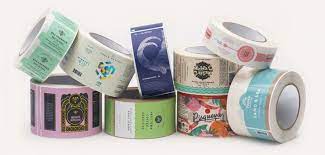Product labels are the unsung heroes of the marketing world. They may be small in size, but they play a significant role in conveying essential information, grabbing consumer attention, and building brand identity.
Creating custom product labels is an art that involves several secrets to making them stand out. Let’s unveil some of the top secrets in creating custom product labels that will help your brand make a lasting impression, helping you save in the process.
1. Begin with a Clear Strategy
The secret to creating remarkable product labels lies in starting with a well-defined strategy. Before diving into the design and production process, consider the following:
Purpose: Determine the primary purpose of your product labels. Are they meant to inform, educate, or entice consumers to purchase your product?
Target Audience: Understand your target audience. Who are you trying to reach with your product? What are their preferences and expectations?
Competition Analysis: Research your competitors’ product labels. Identify what sets your brand apart and how you can use your labels to communicate your unique selling points.
Regulatory Compliance: Be aware of the legal and regulatory requirements for your industry. Ensure that your product labels adhere to all necessary guidelines.
2. Storytelling through Design
The design of your product labels should tell a story. This story should encompass your brand’s identity, values, and the essence of the product itself. Here’s how to achieve this:
Color Psychology: Choose colors that align with your brand’s personality and resonate with your target audience. Each color evokes different emotions, and your choice can have a profound impact.
Typography Matters: Select fonts and typography that reflect your brand’s voice. Whether it’s bold and modern or elegant and traditional, fonts convey a lot about your product.
Imagery and Graphics: Use high-quality images or graphics that are relevant to your product. Avoid generic stock photos and opt for custom visuals that tell your unique story.
Logo Placement: Position your logo prominently but tastefully on the label. It should be easily recognizable and represent your brand identity.
Layout and Hierarchy: Ensure that the layout is clear and easy to navigate. Important information should be easily accessible and legible. Consider using hierarchy to guide the eye to the most critical elements.
3. Material Selection
The choice of label material is crucial for both aesthetics and functionality. Different materials can evoke different perceptions of your product. Consider these material options:
- Paper Labels: Suitable for various applications, paper labels come in matte, gloss, and textured finishes. They are versatile and offer a wide range of customization.
- Vinyl Labels: Vinyl labels are durable and weather-resistant, making them ideal for outdoor or industrial products. They are available in clear or white options.
- Foil Labels: Foil labels add a touch of elegance and sophistication. They are often used for high-end or luxury products and come in various metallic colors.
- Kraft Labels: Kraft labels have a natural, rustic appearance, making them popular for eco-friendly and artisanal products.
- Specialty Labels: Specialty materials like holographic film, foil stamping, or neon labels can add a unique visual appeal to your product.
The material you choose should align with your product and brand image. It’s essential that the material not only looks great but also functions well for the intended use.
4. Size and Shape
Experiment with different label sizes and shapes to create unique and eye-catching designs. Consider custom die-cut labels that match your brand’s style and the product’s identity. Irregular or unique label shapes can make your product stand out on the shelf.
5. The Art of Simplicity
One of the top secrets in label design is the art of simplicity. Avoid cluttering your labels with excessive information or design elements. Simplicity can be powerful and visually appealing. A clean and uncluttered design allows your product to shine and lets consumers focus on the essential information.
6. Information Hierarchy
Consider the hierarchy of information on your labels. Important details like the product name, key features, and usage instructions should be prominently displayed. Secondary information, such as branding or certifications, should complement the primary information without overwhelming the label.
7. Transparency and Authenticity
Consumers value transparency and authenticity. If your product label makes a claim, ensure that it can be substantiated. Authenticity builds trust with your customers and can lead to repeat business.
8. Color Harmony
Creating a harmonious color palette is a secret that can elevate your product labels. The colors you choose should not only align with your brand but also create visual harmony. A well-balanced color scheme enhances the overall appeal of your product.
9. Texture and Finishing
Adding texture and finishing touches to your labels can set them apart. Consider options like embossing, debossing, textured coatings, or specialty finishes like soft-touch coatings. These elements can provide a unique tactile experience for consumers.
10. Quality Control and Testing
Before mass production, conduct quality control and testing. This includes:
Color Accuracy: Ensure that the colors on the printed labels match your design intentions. Colors can appear differently in print compared to on-screen.
Adhesion and Durability: Test the labels on the actual product to confirm that they adhere well and remain intact during use. Consider factors like moisture, friction, and temperature changes.
Legibility and Print Quality: Verify that all text and graphics are legible and the print quality is consistent.
Material Behavior: Assess how the label material behaves on your product. Ensure it doesn’t wrinkle, fade, or lose adhesion prematurely.
Consumer Feedback: Consider gathering feedback from a focus group or target audience to gauge their impressions of the labels.
Be Strategic and Create Now
Creating custom product labels that stand out and effectively convey your brand’s message is a creative and strategic process.
By following these top secrets, you can develop labels that not only look great but also resonate with your target audience and enhance your brand’s identity. The perfect product label is not just a sticker; it’s a powerful tool in building a strong and memorable brand presence.



